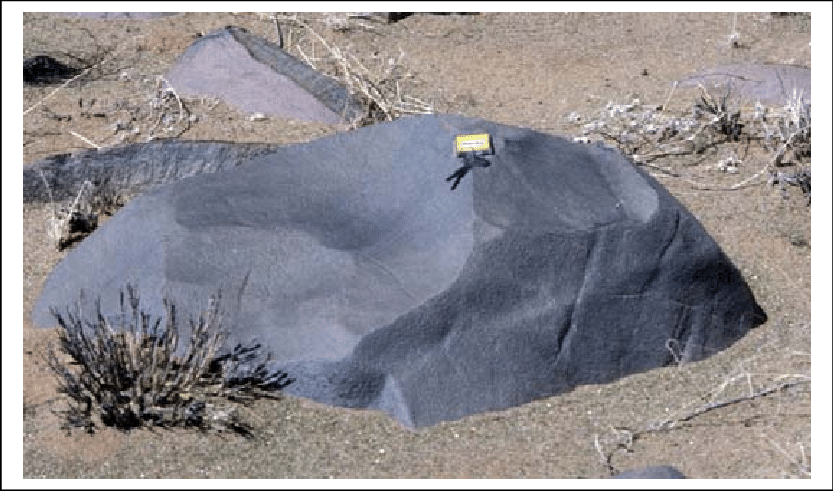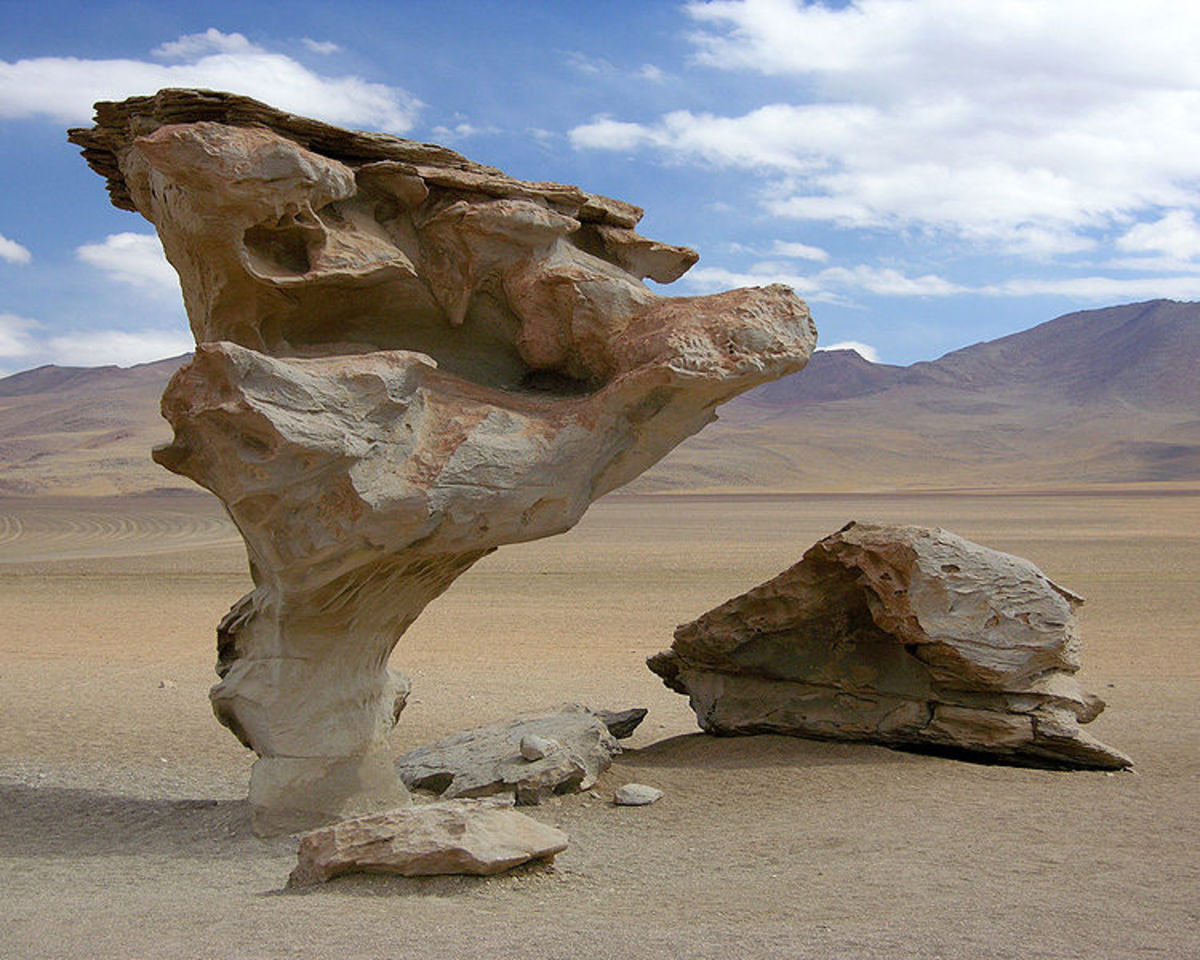Ventifacts are fascinating rock formations shaped by the abrasive action of wind-blown sand and dust. These unique geological features can be found in various arid and semi-arid regions around the world, where the persistent force of the wind has sculpted the rocks over thousands, or even millions of years. In this article, we will explore the top 12 largest ventifacts in the world, delving into their formation, location, and the awe-inspiring vistas they offer.
Ventifacts, also known as wind-faceted stones or dreikanters, are rocks that have been shaped and polished by the relentless action of wind-blown sand and dust. These distinctive formations are characterized by their smooth, faceted surfaces, which are often marked by sharp edges and grooves. Ventifacts can range in size from small pebbles to massive boulders, and can be found in a variety of shapes, including pyramids, wedges, and mushrooms.
The formation of ventifacts is a slow and gradual process that occurs over long periods of time in regions with strong, persistent winds and an ample supply of sand and dust. As the wind blows, it picks up small particles of sand and dust, which act as natural abrasives, gradually wearing away the surface of the rocks. Over time, this process creates the distinctive faceted surfaces and sharp edges that are characteristic of ventifacts.
Ventifacts can be found in many parts of the world, from the deserts of Africa and Asia to the high plateaus of South America. Each ventifact has its own unique character, shaped by the specific geological and climatic conditions of its location. Some ventifacts are isolated formations, standing alone in the midst of a barren landscape, while others form clusters or fields, creating a surreal and otherworldly landscape of sculpted rock.
In this article, we will journey around the world to discover the top 12 largest ventifacts, exploring their formation, location, and the natural wonders they encompass. From the towering stone mushrooms of Argentina to the mysterious rock formations of the Gobi Desert, each ventifact has a story to tell and a beauty to behold.
Stone Mushrooms of Argentina

The Stone Mushrooms of Argentina, also known as the “Setas de Piedra,” are a remarkable group of ventifacts located in the province of Neuquén, in the northwestern part of Patagonia. These towering rock formations, some of which reach heights of over 30 feet (9 meters), are shaped like giant mushrooms, with thin, spindly stems and broad, flat caps.
The Stone Mushrooms are formed from a type of sedimentary rock known as tuff, which is composed of volcanic ash and other debris that was deposited during ancient volcanic eruptions. Over millions of years, the tuff has been sculpted by the persistent action of the wind, which has worn away the softer layers of rock, leaving behind the harder, more resistant layers that form the distinctive mushroom shape.
The Stone Mushrooms are a popular destination for hikers and nature enthusiasts, who come to marvel at their otherworldly beauty and explore the rugged landscape of Patagonia. The formations are located in a remote and isolated area, accessible only by foot or horseback, which adds to their sense of mystery and wonder.
Ventifacts of the Gobi Desert

The Gobi Desert, which stretches across northern China and southern Mongolia, is home to some of the most impressive ventifacts in the world. These wind-sculpted rocks take on a variety of shapes and sizes, from small, faceted pebbles to massive, mushroom-shaped boulders that tower over the surrounding landscape.
One of the most famous ventifacts in the Gobi Desert is the “Singing Mountain,” a large, cone-shaped formation that emits a haunting, musical sound when the wind blows through its many crevices and hollows. The sound is created by the vibration of the rock as the wind passes through it, and is said to resemble the sound of a distant flute or whistle.
Another notable ventifact in the Gobi Desert is the “Stone Forest,” a vast field of towering rock formations that resembles a petrified forest. The formations are composed of a type of sandstone known as Yardang, which has been sculpted by the wind into a variety of shapes, including spires, towers, and arches.
The ventifacts of the Gobi Desert are a testament to the power and persistence of the wind, which has shaped the landscape over millions of years. They are also a reminder of the harsh and unforgiving nature of the desert environment, where only the most resilient and adaptable organisms can survive.
Ventifacts of the Atacama Desert

The Atacama Desert, located in northern Chile, is one of the driest and most inhospitable places on Earth. Despite its harsh conditions, however, the Atacama is home to some of the most spectacular ventifacts in the world, including the “Valle de la Luna” or “Valley of the Moon.”
The Valle de la Luna is a vast, barren landscape of wind-sculpted rock formations that resembles the surface of the moon. The formations are composed of a type of sedimentary rock known as ignimbrite, which was deposited during ancient volcanic eruptions and has been shaped by the wind over millions of years.
The ventifacts of the Valle de la Luna take on a variety of shapes and sizes, from small, faceted pebbles to massive, towering spires that rise up from the desert floor. Some of the most impressive formations include the “Tres Marias” or “Three Marys,” a group of three towering rock spires that stand like sentinels over the surrounding landscape.
The Atacama Desert is also home to other notable ventifacts, including the “Hand of the Desert,” a massive, hand-shaped sculpture that rises up from the sand, and the “Valle de la Muerte” or “Valley of Death,” a vast, barren landscape of wind-sculpted rock formations.
Ventifacts of the Namib Desert

The Namib Desert, located in southwestern Africa, is home to some of the oldest and most impressive ventifacts in the world. These wind-sculpted rocks have been shaped over millions of years by the persistent action of the wind, which has created a surreal and otherworldly landscape of towering spires, deep canyons, and vast, sandy plains.
One of the most famous ventifacts in the Namib Desert is the “Sossusvlei,” a large, sandy clay pan surrounded by towering red dunes. The dunes, which can reach heights of over 1,000 feet (300 meters), are composed of sand that has been carried by the wind from the coast of the Atlantic Ocean, over a distance of more than 60 miles (100 kilometers).
Another notable ventifact in the Namib Desert is the “Sesriem Canyon,” a deep, narrow gorge that has been carved out of the rock by the action of wind and water over millions of years. The canyon is home to a variety of unique rock formations, including towering spires, deep pools, and winding passageways.
The ventifacts of the Namib Desert are a testament to the power and persistence of the wind, which has shaped the landscape over an immense span of time. They are also a reminder of the fragility and beauty of the natural world, and the importance of preserving these unique and irreplaceable wonders for future generations.
Conclusion
In conclusion, the top 12 largest ventifacts in the world are a testament to the incredible power and persistence of the wind, which has shaped these remarkable rock formations over millions of years. From the towering stone mushrooms of Argentina to the surreal landscapes of the Gobi and Atacama deserts, each ventifact has its own unique character and beauty, shaped by the specific geological and climatic conditions of its location.
These ventifacts serve as important geological landmarks and natural wonders, drawing visitors from around the world to marvel at their otherworldly beauty and learn about the complex processes that have shaped them over time. They offer a glimpse into the deep history of our planet, and remind us of the enduring power and resilience of the natural world.
As we continue to explore and study these ventifacts, we gain a deeper appreciation for the intricate interplay of wind, sand, and rock that has created these incredible formations. By preserving and protecting these natural wonders, we ensure that future generations will have the opportunity to experience their beauty and learn from their stories.
So whether you are a geologist, a nature lover, or simply someone who appreciates the raw beauty of the natural world, the top 12 largest ventifacts in the world are a must-see. They offer a chance to connect with the primal forces that have shaped our planet, to marvel at the artistry of the wind, and to be humbled by the vast scale of geological time. These ventifacts are not just rocks, but living testaments to the enduring power and majesty of the Earth itself.

